
Beyond the Bottle: Unpacking the Secrets of High Quality Colognes
Why Understanding Cologne Quality Matters
High quality cologne is defined by three key factors: the concentration of fragrance oils (typically 15-20% for Eau de Parfum), the complexity and balance of scent notes that evolve over time, and the use of premium natural and synthetic ingredients crafted by skilled perfumers. Quality colognes deliver superior longevity (4-8+ hours), projection, and a sophisticated olfactory experience that justifies their price point.
Key indicators of high quality cologne:
- Oil Concentration: EDP (15-20%) or Parfum (20-30%+) lasts significantly longer than EDC (2-4%)
- Ingredient Quality: Premium natural extracts and high-grade synthetics create depth and complexity
- Scent Evolution: Top, middle, and base notes unfold over hours rather than smelling linear
- Longevity & Sillage: Quality fragrances last 6-8+ hours with noticeable but not overpowering projection
- Master Craftsmanship: Created by skilled perfumers with expertise in blending and balance
According to research, the global men's fragrance market was valued at $25.5 billion in 2022 and is projected to reach $42.8 billion by 2030. Yet as one fragrance enthusiast noted about being stuck in an elevator with someone wearing Axe body spray—the opposite of good cologne is memorably bad.
The truth is, you don't need to spend hundreds of dollars to find exceptional quality. Many designer and niche-inspired fragrances deliver sophisticated scent profiles at accessible prices when you know what to look for.
I'm Rodney Gallagher, President of Aromatick, and I've spent years building my personal fragrance collection before channeling that passion into curating high quality cologne at exceptional value for fellow enthusiasts. My goal is to help you understand what makes a fragrance truly exceptional, so you can build a collection you'll treasure without breaking the bank.
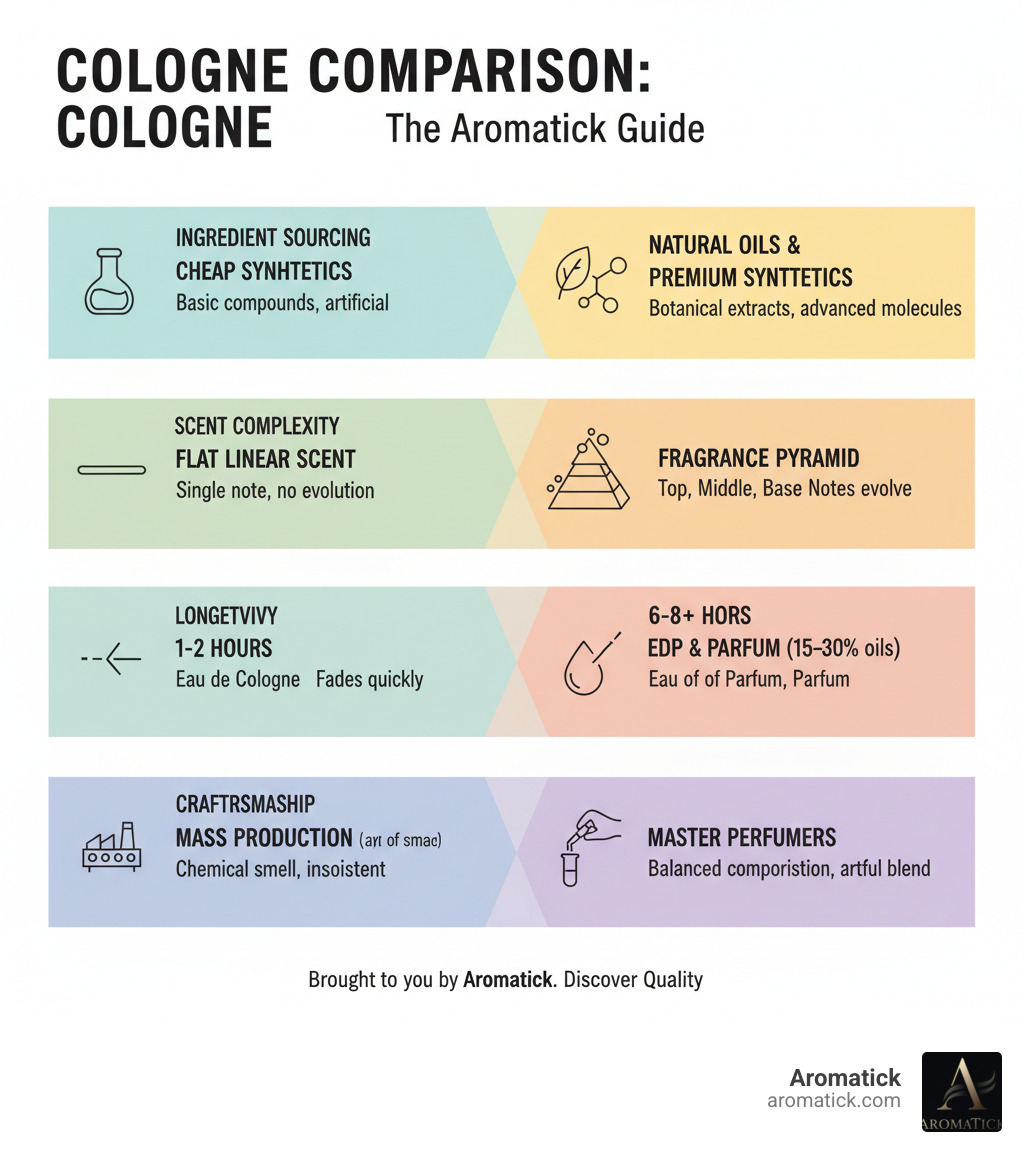
What Defines a High-Quality Cologne?
When we talk about a high quality cologne for men, we're really exploring something special. It's much more than just a scent; it's a carefully crafted experience, blending art and science. Every part, from the ingredients used to the way it's put together, plays a big role. A truly excellent fragrance evolves beautifully on your skin, lasts for hours, and leaves a memorable, pleasant impression.
First off, the ingredients matter a lot. This includes both natural extracts and synthetic oils. You might think "natural" is always better, but master perfumers actually use both! Natural ingredients, like oils from flowers, woods, or spices, bring a deep richness and unique touches. Synthetics, on the other hand, are key for creating certain scents (like fresh ocean notes) that don't exist in nature, and they help make the fragrance last longer and stay consistent. The real secret is the quality of these components and how skillfully they're blended. Cheap ingredients, natural or synthetic, can lead to a flat, harsh scent that fades too quickly. Today, people are really looking for unique and long-lasting fragrances, which means top-notch ingredients and complex scents are more in demand than ever.
The magic truly happens with master perfumers. These artists deeply understand how different scents work together and change over time. They create a compelling "scent story" for each fragrance, often building it with top, middle (heart), and base notes. This complexity means the scent isn't just one thing; it changes and develops on your skin, revealing new layers as the day goes on. This beautiful fragrance evolution is a clear sign of quality.
Longevity (how long it lasts) and sillage (how much it projects) are also super important. A high quality cologne should last a good while—usually 4 to 8 hours, or even more, depending on its strength—without you needing to spray it again and again. Its sillage should create a nice, subtle aura around you, noticeable but not overwhelming. It's about having a presence, not taking over the room! If a scent disappears in an hour or two, or if it's so strong it's uncomfortable, it might be a sign of lower quality or just too much applied.
Finally, while not about the smell itself, the bottle and packaging often give a hint about the brand's dedication to quality. Think about luxurious materials, thoughtful design, and a sturdy feel. These little details can show that a brand invests in every part of its product.
The Role of Fragrance Concentration
Understanding fragrance concentration is key to appreciating a high quality cologne. Terms like "cologne," "Eau de Toilette," "Eau de Parfum," and "Parfum" aren't just fancy words. They tell you the percentage of pure fragrance oil mixed into alcohol and water. This directly affects how strong a scent is, how long it lasts, and its price.
Here's a quick look at the common concentrations:
| Type | Oil Concentration | Typical Longevity |
|---|---|---|
| Eau Fraîche | 1-3% | 1-2 hours |
| Eau de Cologne (EDC) | 2-4% | 2 hours |
| Eau de Toilette (EDT) | 5-15% | 2-3 hours |
| Eau de Parfum (EDP) | 15-20% | 4-6 hours |
| Parfum / Extrait | 20-30% (up to 40%) | 8+ hours |
The science of scent longevity is quite interesting. Colognes with more fragrance oils have less alcohol. Alcohol evaporates quickly, taking the scent with it. So, with more oils, the fragrance stays on your skin longer, releasing its notes slowly. That's why a Parfum, with its high oil content, can last all day, while an Eau de Cologne, made to be light and refreshing, might fade in just a couple of hours.
So, how does concentration affect how well a fragrance performs? A higher concentration usually means:
- Greater Longevity: The scent stays on your skin for a much longer time.
- Stronger Sillage: The scent projects further from your body, creating a more noticeable aura.
- Richer Scent Profile: More oils often allow the perfumer to use a wider range of complex ingredients, leading to a deeper, more evolving scent experience.
If you're looking for a truly high quality cologne that lasts and offers a rich scent journey, we often suggest looking at Eau de Parfum or Parfum concentrations.
How to Identify a High Quality Cologne
Spotting a high quality cologne from a lesser one means using your senses and a little bit of know-how. It's not always about the price tag, but more about the overall experience and the care put into making it.
Here’s our best advice for telling the difference:
Test on Skin, Not Paper: Those little paper strips only give you a quick whiff of the top notes. Your body chemistry – your natural oils, temperature, and even your pH – changes how a scent smells and evolves dramatically. As fragrance expert Tynan Sinks wisely puts it, "What smells sweet on me might pull spicier on you." Always try it on your skin and let it settle in.
Observe the Dry-Down: A high quality fragrance will change beautifully over several hours. It will move smoothly from its initial top notes to the heart, and then finally to the base notes. Pay close attention to how the scent transforms. Does it stay pleasant? Do new facets appear? A lower-quality scent might smell great at first but then quickly fade or turn into an unpleasant, artificial smell.
Avoid Linear Scents (Unless Deliberate): While some simple, modern fragrances are made to stay the same, many lower-quality scents lack the complexity to evolve. If a fragrance smells exactly the same from the moment you spray it until it disappears, it might mean it's a simpler, less refined creation.
Check for Balance and Harmony: A well-made cologne should feel balanced. No single note should overpower the others in a jarring way. All the different parts should work together smoothly to create a cohesive and sophisticated aroma. A harsh, overwhelming alcohol burst at the start or a sickly sweet smell can be warning signs.
Research the Brand and Perfumer: Brands with a long history of excellence, like Chanel, Dior, or Hermès, are known for using great ingredients and working with master perfumers. Niche and artisanal brands also pride themselves on unique compositions and high-quality raw materials. Websites like Fragrantica can be amazing tools for this research!
Read Community Reviews: While everyone's opinion is personal, reviews from groups of fragrance lovers can offer valuable insights. They often talk about a cologne's longevity, sillage, and how it's perceived by different people. Look for consistent feedback on these performance aspects.
By following these tips, you'll soon develop a keener sense for scents and become skilled at recognizing what makes a high quality cologne truly stand out from the rest.
Decoding the Scent: Notes and Fragrance Families
Think of high quality cologne as a story that unfolds on your skin. It's not a static smell—it's a living, breathing narrative that changes and deepens over time. This is what separates truly exceptional fragrances from the one-dimensional sprays you might find in a drugstore.
The secret to this magic lies in understanding fragrance notes and families. Once you grasp these concepts, you'll be able to read a fragrance description and actually predict how it might smell on you. It's like learning a new language—the language of scent.
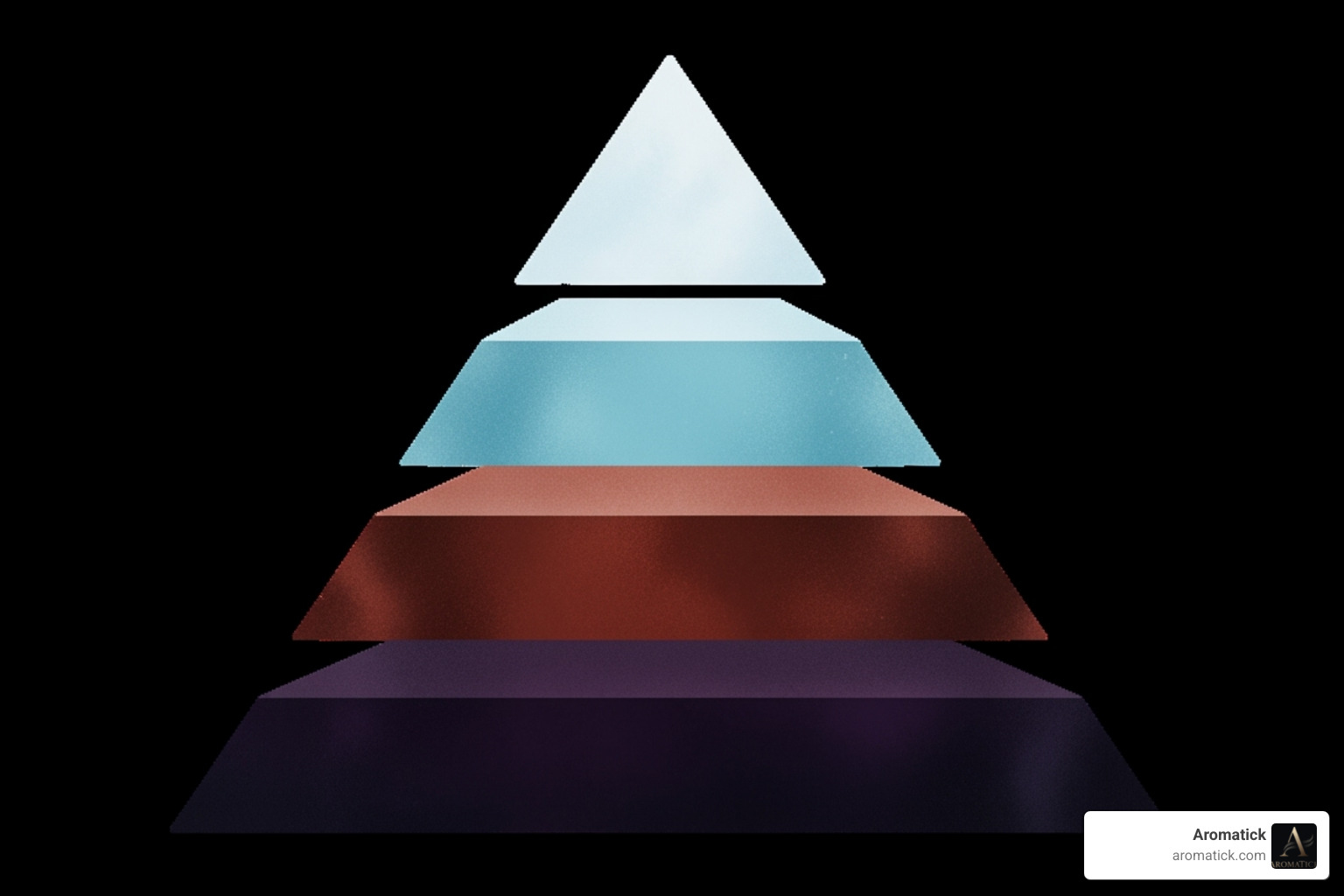
Fragrance notes are the individual ingredients that make up a cologne, and they're organized into what perfumers call the "fragrance pyramid." Picture it like a three-act play for your nose.
Top notes hit you first—they're the opening scene. These are the bright, attention-grabbing scents you smell within the first few seconds of spraying. We're talking about zesty citrus like bergamot and lemon, fresh herbs, or crisp green notes. They're designed to make an immediate impression, but they're also the most fleeting, typically fading within 5 to 15 minutes.
As the top notes evaporate, the middle notes (also called heart notes) take center stage. This is where the real character of the fragrance lives. These notes make up anywhere from 40 to 80 percent of the total scent and last for several hours. You'll often find florals like lavender, spices like cardamom, and aromatic herbs here. Think of these as the plot development—where the story gets interesting.
Finally, we arrive at the base notes—the grand finale that lingers long after everything else has faded. These are the heaviest, richest ingredients: deep woods like sandalwood and cedarwood, warm resins like amber, creamy vanilla, and earthy vetiver. Base notes can last for hours, sometimes even until the next day. They're what creates that lasting memory when someone catches a whiff of your scent hours later.
This journey from top to middle to base is what we call the scent evolution or olfactive journey. A high quality cologne will transition smoothly through these stages, revealing new dimensions as it interacts with your skin's natural chemistry.
Beyond individual notes, fragrances are also grouped into broader categories called fragrance families. These families help you understand the overall character of a scent before you even try it. The main families you'll encounter in men's fragrances include woody (warm and earthy with cedarwood and sandalwood), oriental or amber (rich and spicy with vanilla and exotic resins), fresh (clean and invigorating with citrus and aquatic notes), and fougère (the classic "barbershop" scent built around lavender and oakmoss).
Key Scent Profiles in Men's Cologne
When it comes to high quality cologne for men, certain scent profiles have proven themselves time and again. These aren't fleeting trends—they're the building blocks of masculine fragrance that have stood the test of time.
Let's start with woody notes, which are practically synonymous with men's fragrance. Sandalwood brings a creamy, almost buttery warmth that feels inherently luxurious. Cedarwood offers something completely different—it's dry and crisp, reminiscent of freshly sharpened pencils or a cedar chest. Vetiver is earthier, with a smoky, slightly green quality that adds sophistication and depth. Then there's patchouli, which can be dark and mysterious, sometimes earthy, sometimes sweet. Fragrances like Hermès Terre d'Hermès Parfum showcase vetiver beautifully, creating that perfect balance of masculine elegance.
Citrus notes are the energizers of the fragrance world. Bergamot, lemon, grapefruit, and orange deliver an instant burst of freshness that wakes up your senses. These notes almost always live in the top of the pyramid, creating that initial "wow" moment when you first spray. Chanel Bleu de Chanel is beloved partly because of its bright, sophisticated citrus opening that immediately feels clean and refined.
Aromatic notes come from the herb garden—lavender, rosemary, sage, and mint. They bring a clean, slightly medicinal quality that feels both fresh and comforting. Lavender, in particular, is a cornerstone of classic men's fragrance, appearing in everything from traditional fougères to modern compositions.
For those who want something with more warmth and intrigue, spicy notes are the answer. Black pepper adds a sharp, piquant kick. Cardamom brings a sweet, exotic warmth. Cinnamon and clove offer a deeper, almost gourmand spiciness. Yves Saint Laurent La Nuit de l'Homme is a masterclass in spicy sophistication, blending these elements into something truly captivating.
Then we have oriental notes (also called amber notes), which are all about richness and sensuality. Vanilla, amber, resins, and exotic spices create fragrances that feel enveloping and luxurious. Tom Ford Tobacco Vanille is the poster child for this category—it's warm, sweet, and utterly indulgent.
Now, here's where things get really interesting: the art and science of layering fragrances. Some fragrance enthusiasts like to wear multiple scents at once, creating a completely unique signature that no one else has. It takes experimentation, but the results can be stunning. You might layer a woody base with a fresh citrus, or combine a spicy scent with something clean and aromatic. Some brands even design fragrances specifically to be layered—D.S. & Durga I Don't Know What is marketed as a "fragrance improver" that improves whatever else you're wearing.
The beauty of understanding these scent profiles is that you can start to predict what you'll enjoy without testing hundreds of fragrances. Once you know you love woody scents, for example, you can explore that family with confidence. And at Aromatick, we've curated our collection to include exceptional examples of each of these profiles, so you can find your favorites without the luxury price tag.
The Hallmarks of High Quality Cologne Brands
When you're searching for a high quality cologne, understanding the brand behind the bottle can save you time, money, and disappointment. Not all fragrance houses are created equal, and certain names have earned their reputations through decadessometimes centuriesof dedication to their craft.
The fragrance world generally splits into two main categories: designer and niche. Designer fragrances come from established fashion houses like Dior, Chanel, or Tom Ford. These are typically more widely available and crafted to appeal to a broader audience. Niche fragrances, on the other hand, emerge from smaller, specialized perfume houses that prioritize artistic expression over mass appeal. These brands often use rarer, more expensive ingredients and target fragrance connoisseurs looking for something truly unique. The market for these artisanal scents is growing rapidly as more people seek exclusive, distinctive fragrances that set them apart.
So what separates the truly great brands from the rest? Brand heritage and history matters more than you might think. Houses like Creed, established in 1760, or Truefitt & Hill, dating back to 1805, carry generations of expertise and time-honored perfumery techniques. This isn't just about tradition for tradition's sakeit's about accumulated knowledge passed down through master perfumers.
Speaking of which, brands that employ in-house perfumers or consistently collaborate with renowned "noses" tend to produce more cohesive, higher-quality collections. These are the artists who understand how to balance ingredients, create complexity, and craft scents that evolve beautifully on your skin.
A commitment to quality ingredients is perhaps the most important hallmark. Whether using natural extracts or high-grade synthetic molecules, the best brands source the finest available materials. This investment in raw materials directly translates to the depth, longevity, and overall sophistication of the final fragrance.
For those who appreciate the artistry of luxury fragrances but are mindful of budget, there's good news. The market for inspired fragrancessometimes called cloneshas grown significantly. These fragrances aim to capture the essence and complexity of high-end scents at more accessible price points, making sophisticated scent profiles available to more enthusiasts. If you're curious about this trend, check out our insights on clone fragrances to understand what makes them so appealing.
Designer Houses Known for Quality
Many designer houses consistently produce high quality cologne that rivalsand sometimes exceedsniche offerings in craftsmanship and ingredient quality. These brands have mastered the art of balancing broad appeal with sophisticated compositions.
Dior stands out for creating iconic, sophisticated scents. Fragrances like Dior Homme, Fahrenheit, and the wildly popular Dior Sauvage Elixir are frequently praised for their excellent blending and performance. We've put together a complete guide on Dior Sauvage if you want to dive deeper into this modern classic.
Chanel has earned widespread praise for creating mass-appealing fragrances at the highest level of perfumeryachieving what many describe as "niche quality" in a designer package. Antaeus, Allure Homme Sport Eau Extreme, and Bleu de Chanel are prime examples of this refined approach.
Herm s takes a different path, celebrated for neat, refined compositions that often feel remarkably natural. Bel Ami and Terre d'Herm s Parfum are particularly esteemed for their sophisticated, earthy profiles.
Tom Ford brings luxury and boldness to men's fragrances. While some find them divisive, scents like Noir Extreme, Ombr Leather, and Tobacco Vanille are highly regarded for their rich compositions and impressive longevity.
Yves Saint Laurent offers sophisticated and often sensual fragrances for men. La Nuit de l'Homme and the classic Opium Pour Homme remain popular choices. For a modern take on YSL's approach, explore YSL Myslf.
Acqua di Parma, an Italian house, has built its reputation on neat, fresh, citrus-forward colognes that embody timeless sophistication. Acqua di Parma Colonia, developed over a century ago, remains a classic that defines the genre.
Montblanc creates refined and adventurous scents like Montblanc Explorer, which offers excellent longevity and a sense of exploration in a bottle.
Prada stands out for sophisticated and unique ingredient choices. Their use of iris in the Infusion line lends a distinctive powdery elegance. Prada Paradigme showcases recent complex blending.
Versace delivers bold and charismatic fragrances. Versace Eros has become a popular choice for its vibrant and sensual profile.
Giorgio Armani is known for neat, widely appealing scents. Acqua Di Gio Parfum remains a popular and refreshing choice that's stood the test of time.
Ralph Lauren represents classic American fragrance craftsmanship. Polo EDT is a timeless classic that defined a generation of masculine fragrances.
These brands consistently deliver on complex scent profiles, impressive longevity, and a sense of refinementall hallmarks of high quality cologne.
The Rise of Niche and Artisanal Fragrances
Beyond the familiar designer names, niche and artisanal fragrances offers a treasure trove for those seeking something truly special. These houses operate on a smaller scale, prioritizing artistic vision and exceptional ingredients over mass-market appeal. For anyone wanting a distinctive high quality cologne, niche fragrances open up exciting possibilities.
What makes niche and artisanal fragrances different? Uniqueness and exclusivity sit at the heart of their appeal. These brands dare to be different, creating bold, unconventional, or highly specific scent profiles you simply won't find in mainstream stores. This translates to a real sense of exclusivityfewer people will be wearing your signature scent, making it truly yours.
Focus on raw materials sets many niche houses apart. They pride themselves on using rare, high-quality, and often ethically sourced ingredients. This commitment to exceptional materials contributes directly to the complexity and longevity of their creations. You can often smell the difference.
Artistic expression flourishes in the niche world. Perfumers at these houses typically have greater creative freedom, allowing them to explore innovative combinations and tell elaborate olfactory stories without worrying about appealing to the widest possible audience.
Creed stands as one of the most prestigious niche houses, with a 250-year track record. Their fragrances, particularly Creed Aventus, are renowned for exceptional quality and impressive longevity. The brand has become synonymous with luxury and masterful craftsmanship.
Maison Francis Kurkdjian has earned recognition for neat, sophisticated compositions. Aqua Universalis exemplifies their refined approach to modern perfumery.
Le Labo celebrates a unique, raw, and often minimalist philosophy. Fragrances like Le Labo Th Matcha 26 showcase their distinctive style, focusing on individual notes rather than complex pyramids. Their approach has cultivated a devoted following among fragrance enthusiasts who appreciate their uncompromising vision.
At Aromatick, we're passionate about making both designer and niche-inspired fragrances accessible. We believe everyone should be able to experience exceptional scents without breaking the bank. Whether you're drawn to the prestige of established designer houses or the exclusivity of niche creations, understanding what defines quality helps you build a collection you'll truly treasure.







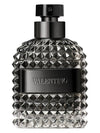
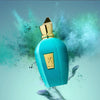






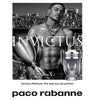
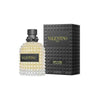

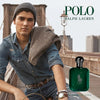
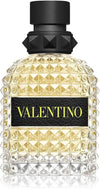



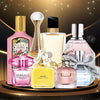

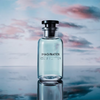

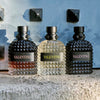

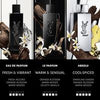

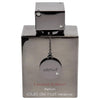
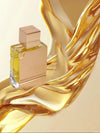
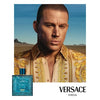
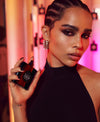

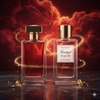
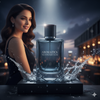

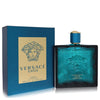
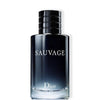
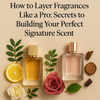


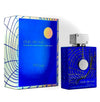

Comment (0)